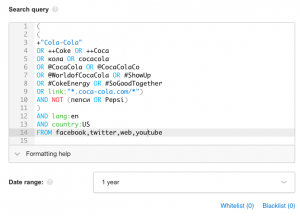As we ease into the next tax year, it’s the right time to assess what’s new for businesses:
-
Minimum wages:
They went up in 13 states. You’ll need to refigure the withholding and deductions on affected employees.
-
W-4 forms:
They’re new for 2020, reflecting the removal of allowances for calculating paycheck withholdings.
-
Overtime rules:
About 1.3 million additional workers will now get overtime if they earn less than $ 35,568, up from last year’s threshold of $ 23,660.
-
Retirement plans:
If you offer a 401(k) or similar plan, you can:
- More easily recommend annuities.
- Collect a larger ($ 500) credit to set up a retirement plan if you have 100 or fewer employees.
- Collect a $ 500 credit for the adoption of auto-enrollment.
- Increase the maximum default percentage of compensation from 10% to 15%.
- Include more part-time workers in your retirement plan by reducing the minimum requirement from 1,000 hours to 500 hours in at least three consecutive years.
- More easily establish Multiple Employer Retirement Plans among two or more employers.
- Set up a new plan by your filing date in the following year rather than December 31 of the current year.
- Face higher penalties for failing to file returns and employee benefit plan reports.
As you assimilate these changes, you should prepare your checklist for 2020 taxes.
The 2020 Checklist
Hopefully, you’ve already started on your 2020 Tax Checklist. Here are the items we recommend you include:
-
Mark your calendar for important deadlines:
- January 31, 2020: W-2/1099-MISC form distribution.
- March 15, 2020: S-Corporations and partnerships filing deadline.
- April 15, 2020: Deadline for sole proprietorships, single-member LLCs and C-Corporations.
- October 15, 2020: Deadline for filing extension returns.
-
Identify the required forms for company filings:
- W-2 and 1099-MISC for employees and independent workers.
- Sole proprietors require Form 1040 and Schedule C.
- S-Corporations require Form 1120-S.
- C-Corporations require Form 1120.
- Partnerships require Schedule K-1 and Form 1065.
-
Assemble your information:
- Bank statements
- Credit statements
- Income and expenditure reports
- Accounting documents
- Gross receipts
- Sales records
- Previous year’s return
- Depreciation schedule
-
Compare business and personal expenses.
- You need to avoid inconsistencies and overlaps between the two. Be careful to explain when you used personal funds to pay business expenses and business funds to pay personal expenses.
-
Get on top of your 1099s.
- You may be issuing them to contract labor and vendors. Also, you’ll be receiving them from some customers. Keep tabs on all of these in case of audits.
-
Review your deduction opportunities.
- This is best done with or by your CPA or bookkeeper. You must properly account for your business deductions, including items like equipment, travel, and supplies. But you should also search out less obvious deductions. If you work at home, make sure you take the maximum home office deduction. The same is true business mileage. Keep good records in case the IRS seeks proof.
-
Review your estimated payments and payroll deposits.
- You don’t want to overpay these items, because you can use the surplus payments for other reasons.
-
Consider an extension.
- If you find yourself facing complexities you hadn’t anticipated, you can file for an extension to work out the solutions. You’ll still have to pay your taxes on the due date, but you’ll be able to take the time necessary to file a clean return.
What If You Owe Taxes?
You may find that you own significant taxes for 2019. Maybe its because you earned more than estimated, or that you failed to take sufficient payroll withholdings. If you are a sole proprietor, you might have posted insufficient quarterly estimates.
Business & Finance Articles on Business 2 Community
(13)
Report Post





